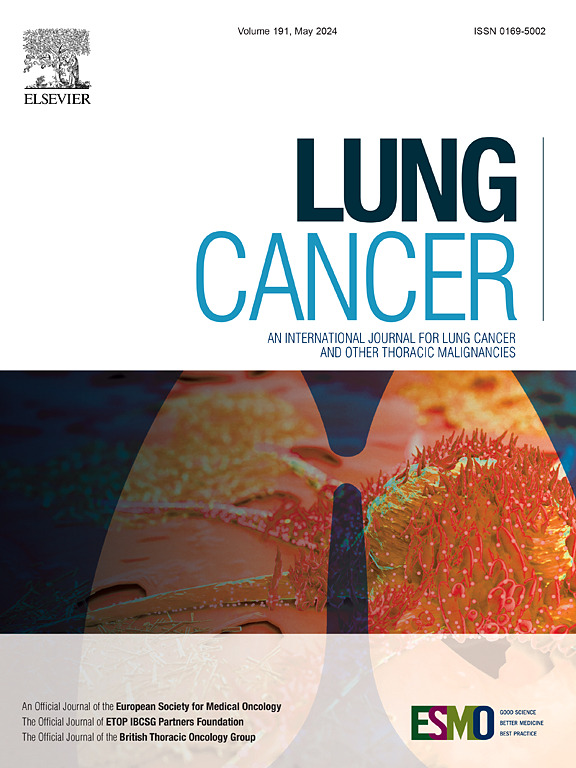Pathological & radiological variables in the diagnosis of bronchopulmonary carcinoids (BPCs) with a focus on Antigen Kiel 67 (Ki-67) proliferation index
IF 4.5
2区 医学
Q1 ONCOLOGY
引用次数: 0
Abstract
Background
Bronchopulmonary carcinoids (BPCs) are classified into typical carcinoids (TC) and atypical carcinoids (AC), based on the mitotic count and absence/presence of necrosis on pathology specimens. There are limitations to accurate measurement of these criteria. It important to study other markers like Ki-67, to enhance the diagnostic accuracy of lung carcinoids.
Objective and methodology
Retrospective analysis of BPCs treated with surgery between 2012–2022, to examine the accuracy of Ki-67 on the diagnostic specimen, concordance of diagnostic and resection specimens, diagnostic accuracy of Positron Emission Tomography (PET) and concordance of clinical and pathological staging.
Results
205 patients were included in the analysis (final diagnosis TC 180, AC 25). Mean age 60.5 years and 68 % female. Ki-67 (<5% vs. 5–30 %) on diagnostic biopsy, available in 64 % (n = 131) of the cohort, had specificity (diagnose TC correctly) of 89.4 % (95 %CI 80.4 %-94.7 %) and sensitivity (diagnose AC correctly) of 77.8 % (40.2 %-96.1 %). This compared to 97.5 % (90.3 %-99.6 %) and 36.4 % (12.4 %-68.4 %) for mitotic count (<2mitoses/2mm2 vs. 2-10mitoses/2mm2) and 100 % (94.4 %-100 %) and 21.4 % (5.7 %-51.2 %) for necrosis (absence vs. presence). A pre-resection diagnosis of TC (including surgical biopsy) shows better concordance with final diagnosis on resection specimen (94.9 %, 95 %CI 88.7 %-97.9 %, n = 117) as compared to the diagnosis of AC 83.3 % (95 %CI 50.9 %-97.1 %, n = 12). Concordance for AC appears higher with image guided lung biopsy 80 % (95 % CI, 29.9 %-98.9 %) than bronchoscopy 50 % (9.5 %-90.5 %). SUVmax on 18FDG-PET was a modest predictor of BPC sub-type with an AUC of 0.684 (95 % CI: 0.545,0.823). The clinical and pathological staging were concordant in 46 % (85/184) cases. However, 27 % (50/184) were upstaged and 13 % (23/172) found to have occult nodal metastases on pathology review of the surgical specimens.
Conclusion
The diagnosis and sub-typing of BPCs on diagnostic specimens is challenging. Our data suggest Ki-67 could increase diagnostic accuracy, but further research is needed to confirm this.
求助全文
约1分钟内获得全文
求助全文
来源期刊

Lung Cancer
医学-呼吸系统
CiteScore
9.40
自引率
3.80%
发文量
407
审稿时长
25 days
期刊介绍:
Lung Cancer is an international publication covering the clinical, translational and basic science of malignancies of the lung and chest region.Original research articles, early reports, review articles, editorials and correspondence covering the prevention, epidemiology and etiology, basic biology, pathology, clinical assessment, surgery, chemotherapy, radiotherapy, combined treatment modalities, other treatment modalities and outcomes of lung cancer are welcome.
 求助内容:
求助内容: 应助结果提醒方式:
应助结果提醒方式:


